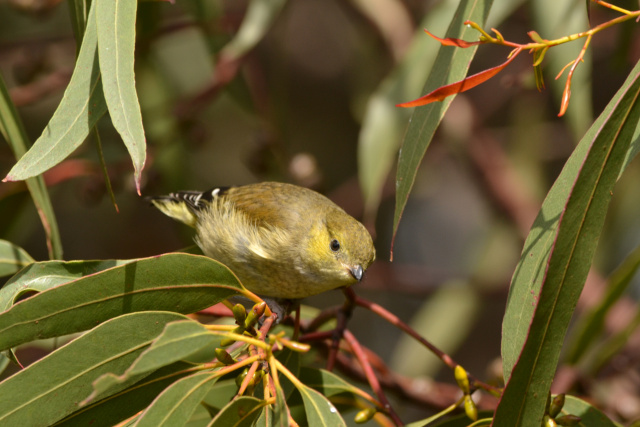This project is focusing on improving outcomes for two threatened species of birds on Bruny Island, the Forty Spotted Pardalote and the Swift Parrot.
Two of the critical things for the Forty Spotted Pardalote is having enough nest-sites, and a difficulty it is facing from a parasitic native fly.
We're going to deal with the flies, a parasite which has been impacting the Forty Spotted Pardalotes’ breeding.
We’re also providing nesting options through the Forty Spotted Pardalote nest-box project. A lot is going to depend on how successful we are in terms of nest-box design, in terms of keeping Striated Pardalotes out of Forty Spotted Pardalote nests. But if we can do that, we can potentially breed up the numbers on Bruny Island and Maria Island to the point where the habitat is completely saturated.
Because they're territorial, any fledglings that are produced have to leave the parental territory so if all of the habitat is occupied by territories there'll be nowhere for the fledglings to go. This will be the point that where we start translocating them and moving them back onto the main island of Tasmania where there is still good habitat in places but at the moment it's just too far for them to disperse to because they're not strong flyers.
I think we've got a really good chance of recovering the Forty Spotted Pardalote.

We’re also providing nesting options through the Forty Spotted Pardalote nest-box project.
This project is focusing on improving outcomes for two threatened species of birds on Bruny Island, the Forty Spotted Pardalote and the Swift Parrot.
Two of the critical things for the Forty Spotted Pardalote is having enough nest-sites, and a difficulty it is facing from a parasitic native fly.
We're going to deal with the flies, a parasite which has been impacting the Forty Spotted Pardalotes’ breeding.
We’re also providing nesting options through the Forty Spotted Pardalote nest-box project. A lot is going to depend on how successful we are in terms of nest-box design, in terms of keeping Striated Pardalotes out of Forty Spotted Pardalote nests. But if we can do that, we can potentially breed up the numbers on Bruny Island and Maria Island to the point where the habitat is completely saturated.
Because they're territorial, any fledglings that are produced have to leave the parental territory so if all of the habitat is occupied by territories there'll be nowhere for the fledglings to go. This will be the point that where we start translocating them and moving them back onto the main island of Tasmania where there is still good habitat in places but at the moment it's just too far for them to disperse to because they're not strong flyers.
I think we've got a really good chance of recovering the Forty Spotted Pardalote.

We’re also providing nesting options through the Forty Spotted Pardalote nest-box project.
You might like...

Helping Forty Spotted Pardalotes nest

Ecology of the Forty-Spotted Pardalote

Improving reproductive success of forty spotted pardalotes

Bruny Island nesting box project
Newsletter
Sign up to keep in touch with articles, updates, events or news from Kuno, your platform for nature

